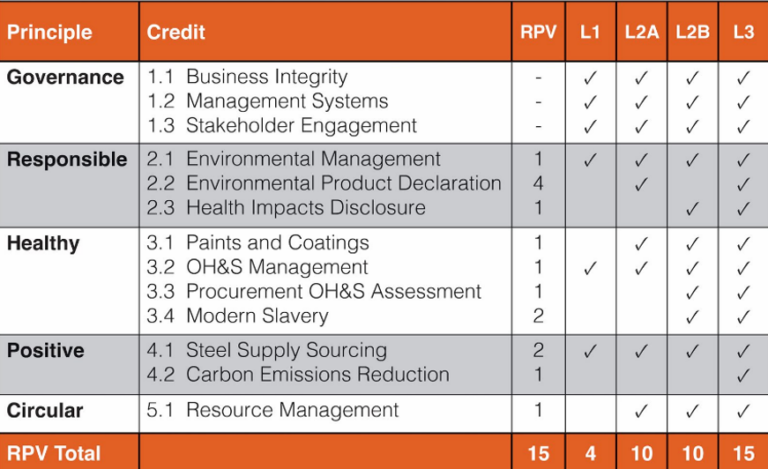The ASI Steel Sustainability Australia (SSA) Certification Program
In January 2023 the Australian Steel Institute (ASI) launched the Steel Sustainability Australia (SSA) certification program, now open for applications. The SSA Certification Program supersedes the ASI’s Environmental Sustainability Charter (ESC). It is the first certification of its kind, engaging the entire steel value chain by certifying downstream steel businesses such as fabricators, roll formers, and reinforcing processors and verifying upstream steel producers against best practice ESG indicators. SSA is a recognized initiative under the GBCA Responsible Products Framework, gaining ‘Good or Best practice’ product recognition in the Green Star Buildings rating tool.
ASI Sustainability Manager Jerusha Beresford explained the extensive stakeholder consultation and certification design work that went into the launch of this new sustainability certification.
“The ESC was predominantly assessing environmental management and was pitched mainly at steel fabricators. SSA is open to any steel business downstream from steelmaking and assesses the environmental and social impact of fabricating or processing the steel to the finished product. The steel industry has lots of different sectors in the supply chain and most of the carbon impact is at the crude steel manufacturing end. Having said that, there is still impact downstream where finished steel products are fabricated or processed, and this is what this program aims to capture, as well as ensuring the steel used in these processes are from responsible steel makers. Our vision was to have a program that engaged the whole steel supply chain, providing transparent measurement of impacts from crude steel manufacturing right down to the fabrication or processing of the finished product. It’s the first steel specific program that is relevant to the whole supply chain.”
“One of the main requirements of the certification scheme is to verify where the steel is being sourced from, and to ensure these manufacturers are operations held against best practice ESG standards including having active decarbonisation strategies in place to avoid getting the worst emitting steel into the fabrication processing facilities. That was one of the biggest requirements we consulted the Green Building Council of Australia (GBCA) and industry on.”
Lead by a not-for-profit organisation the SSA program is run on a cost recovery model to achieve affordability and accessibility for all businesses in the steel industry.
How it Works
SSA operates under a tiered system of certification model, with three broad levels of certification a steel work business can pursue. L1, L2 (which has an A and B pathway) and L3. A breakdown of the different levels as well as their corresponding Green Star Responsible Product Value (RPV) score is below. Compliance to the chosen level of certification is assessed by an independent auditor on an annual basis. SSA steel suppliers undergoing certification can be viewed on the live online listing.

There is a logic behind the tiered certification model that the SSA program adopts, which Jerusha expanded upon: “We’ve got many different companies in the steel industry all at different capacity levels, from mum and dad businesses right up to large companies. The tiered certification model allows companies to enter into the program and progress their sustainability journey over time.”
All levels verify the steel supply against ESG requirements, but only the higher L2 and L3 gain direct recognition under the Green Star Responsible Products Framework.
The difference between L2A and L2B
There are two pathways for L2: L2A and L2B. SSA needed to offer two pathways to L2 certification because under the criteria for L2A a company has to have an Environmental Product Declaration (EPD) for 100% of the steel they are selling. Jerusha explains, “we needed another pathway to provide certification at that level if the company couldn’t provide an EPD for 100% of the steel because like all construction materials, we don’t have EPDs for all steel products yet.” That being said, all levels of certification do require at least 50% of supply to have EPDs, under the 4.1 Steel Supply Sourcing requirement.
A Step Forward for Industry
The new certification is a great step for the steel industry, said Jerusha: “This certification program will help building companies and other end users reduce their scope 3 emissions, particularly through L3 because it takes into account carbon emission reductions and how the fabricator or the processor are reducing those year on year. It also rewards and encourages the development of EPDs within the steel industry which is crucial to gaining accurate baseline data for emission reduction plans.”
For More Information
Visit the SSA website: www.steelsustainability.com.au or contact ssa@stee.org.au.